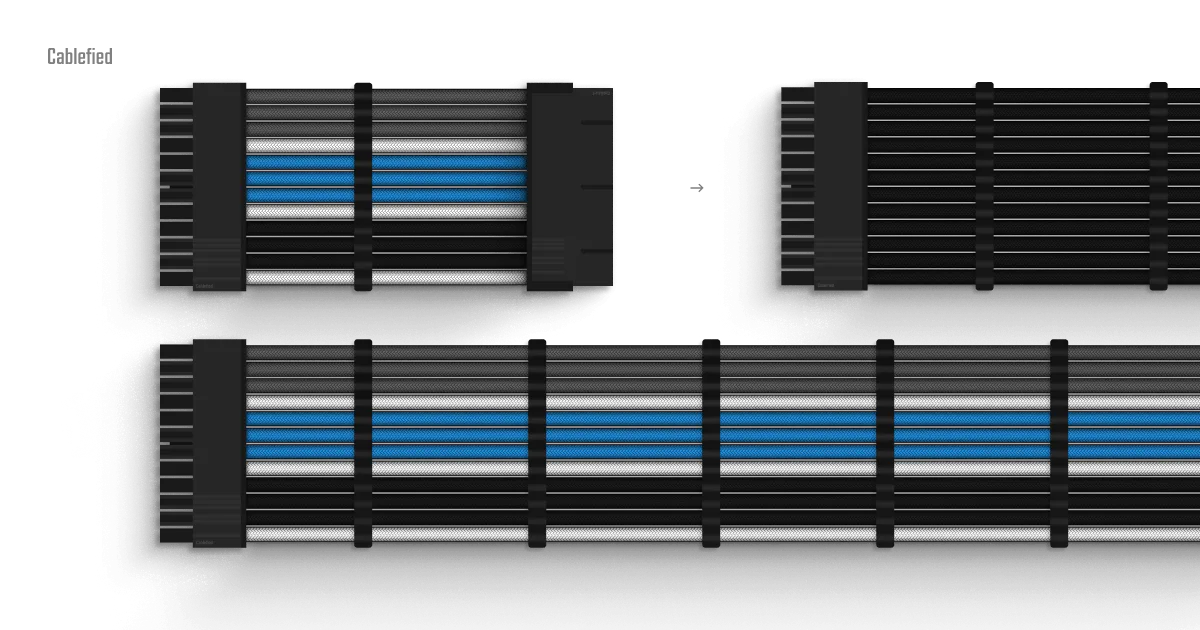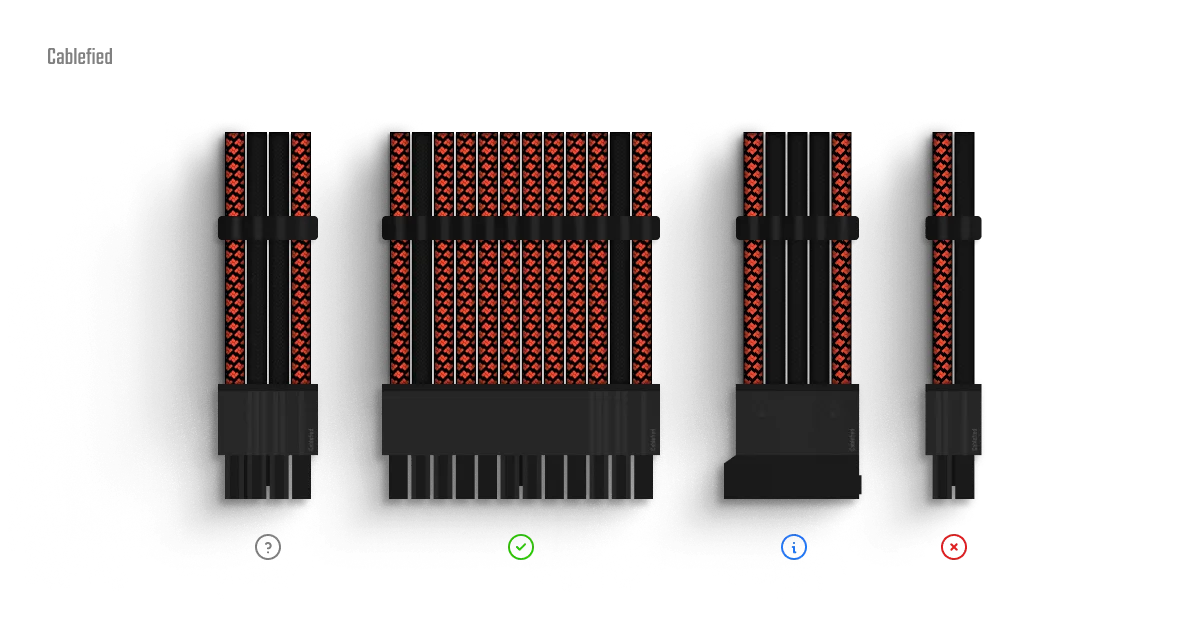All PC cables have connectors on the ends to plug into components, power supplies, and even other cables. Connector sizes range from 4 pin connectors all the way up to 24 pin connectors, and they are most commonly manufactured in black, white, and red. However, there are several different style connectors, with various pin counts and keys, for their own particular use cases.
As a result, when you are putting together a new PC build, or crafting your own sleeved cables, it can be helpful to understand the differences between connector styles, male and female cable options, and the individual parts used in extension cables and modular replacement cables.
Female connectors compared to male connectors
Female connectors feature individual, pointed pins, and plug directly into the male housings on components in graphics cards, motherboards, and power supplies. When working with modular cables, you will only be using female connectors. Male connectors, in comparison, feature a single housing to allow for a female PC cable to plug into it in order to extend the length of the original cable. Therefore, extension cables will have one end with female connectors, and one end with male connectors.

What are ATX, PCI-E, and EPS connectors?
These acronyms define the variants of each connector type. For example, the motherboard’s main 24 pin cable uses an ATX connector, graphics cards use PCI-E connectors, and CPU power in the upper left of the motherboard uses EPS connectors. Furthermore, the PCI-E and EPS connectors, despite both being an 8 pin connector, are keyed differently, so they can not accidentally be plugged into each other’s location.
What is the connector key?
The connector key defines the shape of the pins on the connector. For example, some pins are square, while others are angled at the corners. The key prevents a specific cable from being plugged into the incorrect position on both the power supply and component end.
Component end versus power supply end
The component end of power supply cables is relatively simple to follow, as all PC parts are standardized across brands. Motherboards use the standard ATX 24 pin connector and 8 and 4 pin EPS connectors, while graphics cards use 8 and 6 pin PCI-E connectors. This does not change across brands.
However, when it comes to the power supply end of the cables, the connectors are rarely standardized due to the power supply’s pinout. To explain, a Seasonic power supply may use different connectors on the power supply end of the cable than a Corsair power supply, despite them both using what appear to be regular 8 pin connectors. This relates back to the previous topic on PCI-E and EPS connectors being keyed differently. For example, Seasonic’s PCI-E and EPS cables use the standardized connector on the component end, but only use PCI-E connectors on the power supply side of the cable. Corsair, in comparison, uses only EPS connectors on the power supply end of the cable. These differences appear across all brands, with some even using both EPS and PCI-E on the power supply end, such as EVGA.
This concept is incredibly important to consider, as the connector type plays a much larger role in power supply pinouts than most believe. While the wiring may be the primary factor you read about online regarding interchangeability between brands, it may not even be possible to plug one of the cables into the power supply if the connectors are different, despite the wiring possibly being the same. This is why the pinouts listed here on Cablefied showcase the connectors’ keys for each pinout alongside the wiring configuration.
Wrapping up
We should now understand the basics of which connectors are used with each component, the differences between ATX, PCI-E, and EPS connectors, and the differences between female and male connectors for modular and extension cables. In addition, there should be a bit more clarity with regard to PC cables’ connectors in relation to a power supply’s pinout.


